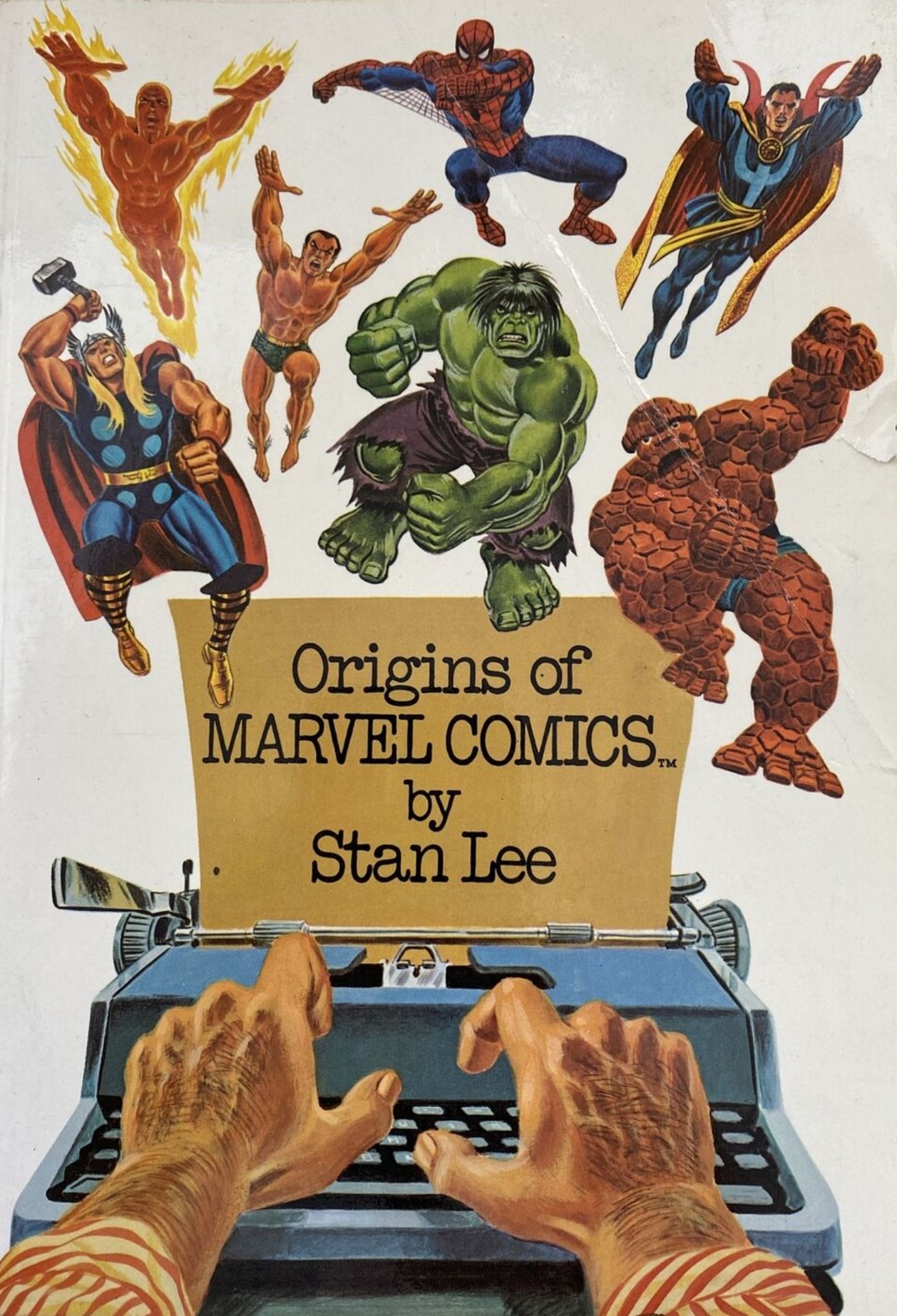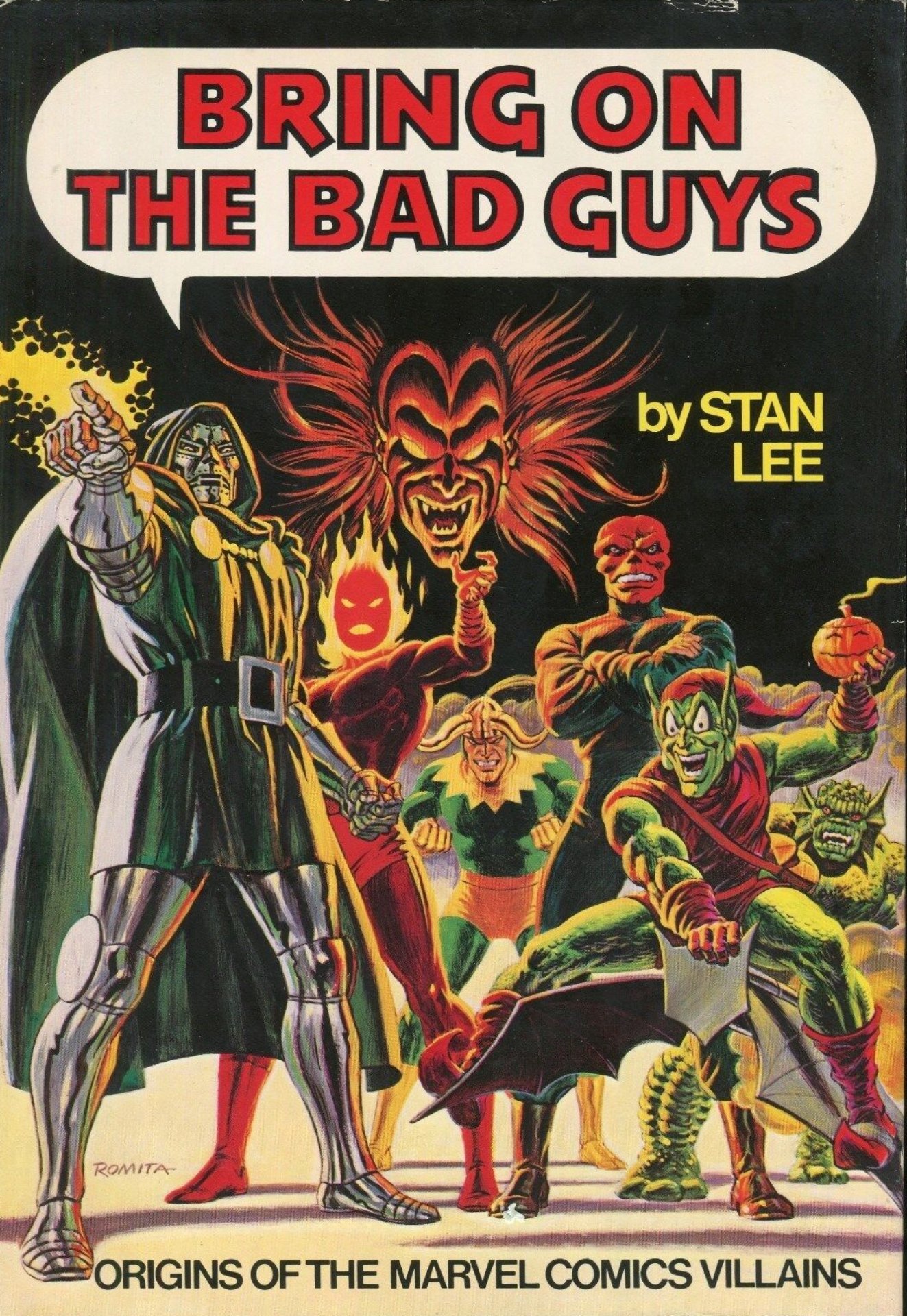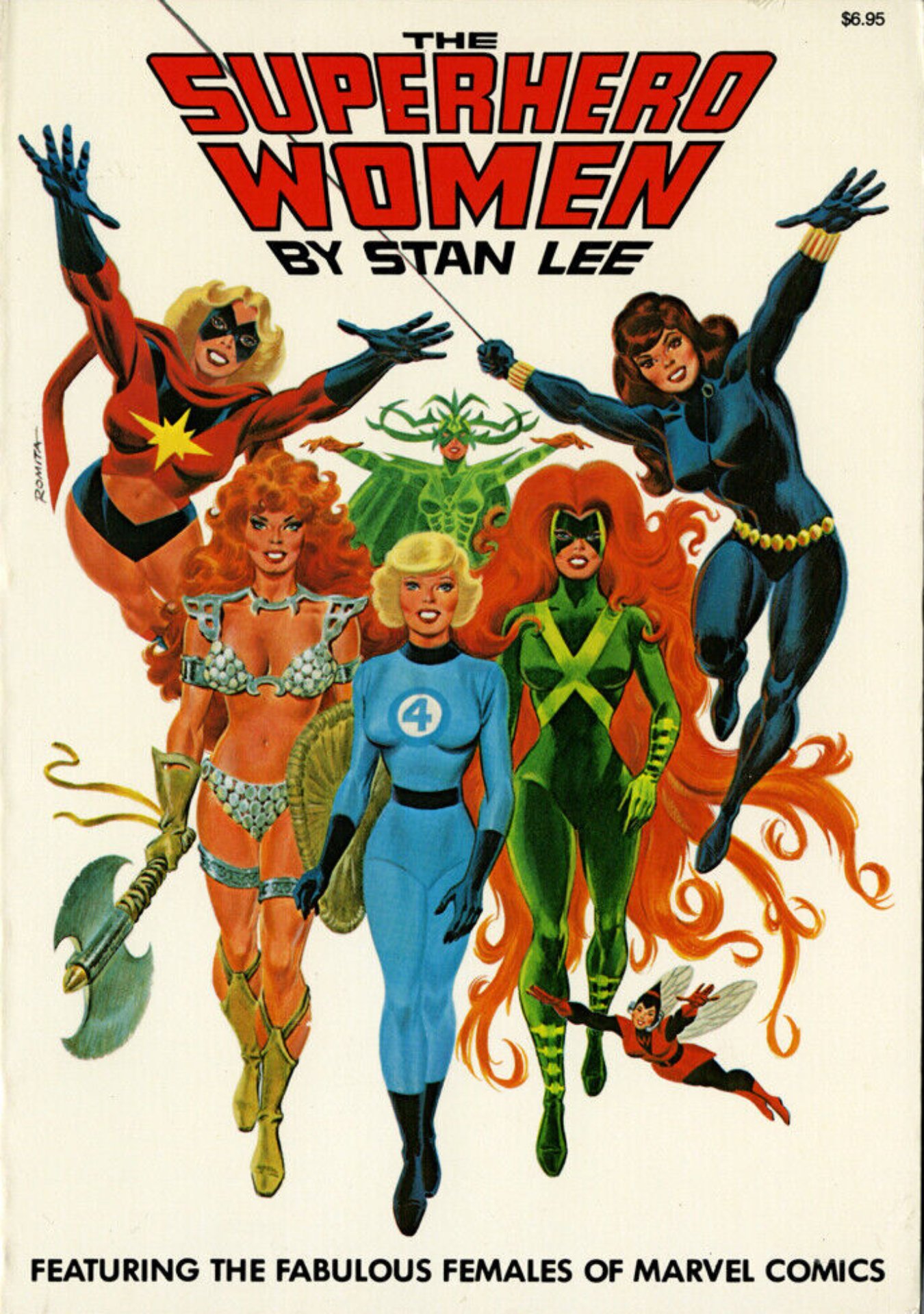Origins of Marvel Comics by Stan Lee is the legendary autobiography of Marvel Comics
The influential trade paperback and its sequels were required reading for a generation of comic book fans and professionals

Every superhero has a great origin story. Marvel Comics has its own as well.
In 1974, mighty Marvel had been ticking along for about 13 years and had already enjoyed great success, supplanting DC as the top publisher and getting its characters on Saturday morning cartoons and a variety of licensed products. But Marvel still wasn't mainstream. It was kid stuff, or kid stuff-plus, roping in a decent-sized college audience. It still hadn't cracked the comic book ceiling and pushed into mainstream success.
That changed in 1974 with the publication of Origins of Marvel Comics, a book published not by Marvel, but rather by main-street giant Simon & Schuster. Origins changed the game and laid a foundation still felt today.
Just how big was it? Consider:

The book was published by Simon & Schuster in 1974, and by January 1975 Marvel publisher and spiritual figurehead Stan Lee was already touting that the book was in a second printing and that Simon & Schuster had commissioned a sequel.
In February 1975, Stan took to his 'Stan's Soapbox' column running across Marvel's comic book line to mention the many radio and TV interviews he had already done and hawked an upcoming national book-signing tour.
Origins of Marvel Comics received reviews - almost all glowing in nature - in newspapers across the country. The Los Angeles Times commissioned no less a luminary than sci-fi legend Ray Bradbury to do the Times' review of the book.
Get the best comic news, insights, opinions, analysis and more!
By the end of the year in December 1975, the sequel was announced and given a name: Son of Origins of Marvel Comics. Son of Origins of Marvel Comics proved popular enough that even more sequels in the same format would follow in the years to come such as:
- Bring on the Bad Guys, focusing on Marvel villains
- The Superhero Women, Marvel's ladies, natch
- Marvel's Greatest Superhero Battles, which is pretty self-explanatory

Origins of Marvel Comics, simply put, told "the origin of the origins" - what the thought processes and bumps in the road were for all the great heroes in the Marvel pantheon. Who knew these stories? The man who was there for all of them, the consummate storyteller, Stan Lee himself. And he did not disappoint.
For the first time, Stan relayed how the birth of the Marvel Age, Fantastic Four #1, was spurred on by his beloved wife, Joan, and how she convinced him to finally do a book the way he wanted to do it. The results show this was a good decision.
Stan revealed how the Incredible Hulk was born of a soft spot in his heart for misunderstood monsters, Frankenstein's in particular; how the need to make Spider-Man look like a nerdy, gangly teenager necessitated a move away from mainstay hero artist Jack Kirby and to Steve Ditko (again, with pitch-perfect results); and how he struggled with the concept of Super-God, opting instead for a lower-case god and tapping into Norse myth with Thor.
All the books were an early 'inside baseball' primer for comic books and one that worked masterfully. Stan laid out bits of trivia for fans who didn't even know they were hungry for it. Things like:
- How Uru, the mystical metal from which Thor's hammer was forged, was a concoction of writer Larry Lieber's imagination—and that Stan thought it was a real and actual metal for years!
- How the Abomination was born out of a desire to give the almost all-powerful Hulk an opposite number in both backstory and power
- How the X-Men almost weren't the X-Men. Stan wanted to call the team simply 'The Mutants,' but then-Marvel publisher Martin Goodman put the kibosh on that title, fearing that readers wouldn't know what a mutant was -as if they'd know what an X-Man was!

Ah, Goodman. The man who had owned Marvel Comics sold the company and was gone by 1972. Stan took advantage of Goodman's absence, painting his former boss as someone who didn't much care for the readers, never respecting their intelligence. It was Stan who drove Marvel to something more aspirational, a rung up. Stan, in his own very Stan-like way, absolutely cared. It showed in his dedication page in Bring on the Bad Guys, the second sequel which hit in 1976:
"To you, the literate comic book fan, this volume is gratefully dedicated.
"In one brief decade, your enthusiasm, your interest, and your unwavering support have helped make an entire generation increasingly aware that the ubiquitous comic is not only a major contemporary art form, but truly an integral part of our cultural heritage.
"Hey—thanks a lot!"
Origins and its sequels even birthed a whole new way of reading comics.
"Origins was the trade paperback before the trade paperback market even existed," says filmmaker Kevin Smith. "And it wasn't just some Marvel in-house compilation book. It was published by Simon & Schuster, a real publisher, a book-book publisher. Most importantly, that was an indicator that somebody outside the comic book market was treating this seriously."
Smith was turned on to Origins in the same way many other readers of the '70s and '80s were, making the book a trailblazer again.
"If you were looking for a comic book in the library in the '80s, good luck," he says. "You weren't finding one, except for this. That legitimized what Stan was doing, what comics were doing. This was a beautiful, perfect way into the Marvel Universe for someone who didn't grow up in it, or a classic revisit, a nostalgia jolt, if you were reading Marvel back when this happened."
It was both new and nostalgia for longtime Marvel artist and writer and former editor-in-chief, CCO, executive vice president, and creative director of Marvel, Joe Quesada.
"That book was so instrumental to me in understanding and building a love of Marvel as a kid," Quesada says. "I started reading Marvel Comics in 1970, so I had already missed a decade of publishing. I had an appetite to learn more, so I went to a bookstore - like a book store bookstore! - to get a copy. I had no idea about the origins of these stories and Stan's thought process behind them. It was an eye-opening experience."

And even today, the material in Origins of Marvel Comics and its sequels are still foundational. When someone is exposed to Marvel anew, say, through a Doctor Strange movie, you're seeing the same origin that Stan revealed in Origins of Marvel Comics, and also the thoughts from Stan and others that went into it. Thus the '60s are linked to the '70s to today.
Hey, Stan Lee knew it himself. Just read the epilogue to Origins of Marvel Comics:
"Let's not consider this a conclusion. Let's rather call it a beginning, the beginning of an ever-continuing journey into the realm of Marvel mythology -a realm where all, regardless of color, sex, or creed, are indeed kindred souls, united by a common love of adventure, fantasy, and just plain fun. Perhaps, just perhaps, that's what Marvel's really all about.
"Excelsior!"
Make sure you've read all the best Marvel stories of all time.
—Similar articles of this ilk are archived on a crummy-looking blog. You can also follow @McLauchlin on Twitter


